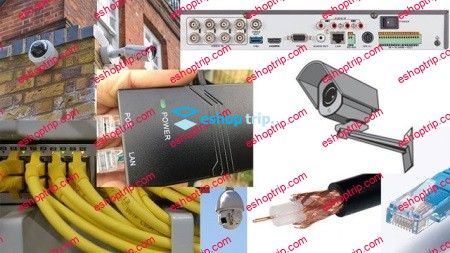MP4 | Video: h264, 1280×720 | Audio: AAC, 44.1 KHz
Language: English | Size: 580 MB | Duration: 41m
Guide for Performing Arc Flash Calculations
What you’ll learn
Learn about the different bus bar electrode configurations
Voltage range and conductor gap information
Box height/width/depth, as well as standard sizes
The arcing current variation correction factor and continuous voltage spectrum
The standard equipment class and typical bus gaps as well as typical enclosure sizes
Learn about the minimum arching current variation, grounded vs ungrounded systems
Learn about 2 second rule as well what happened to the 125kVA transformer cut off language that was present in the 2002 version but not the 2018 version
Requirements
Having some familiarity with the NFPA 70E standard and IEEE 1584 standard is key to understanding the changes behind the IEEE-1584-2018 version. Rest assured, we’ll be giving as much context as possible so participants can understand the major differences and the drivers / motivation behind the change.
Description
Welcome, Everyone!
This is Abdur from AllumiaX Engineering headquartered in Seattle, Washington. We do power systems engineering for industrial commercial customers. And in this technical course, we’re going to talk about the IEEE-1584 2018 published standard. It is the guide for performing arc flash hazard calculations. And I want to walk you through some of the things that we’re going to cover in this technical course. So, let’s get started.
In this course, we’re going to talk about the introduction (what’s the need for this IEEE-1584 standard). We’re going to talk about the history and go over the IEEE 1584-2002 version up to the 2018 version. And there are the 16 years of rich history that’s extremely important to understand where we are today with the 2018 version and some of the changes.
Furthermore, we’re going to talk about a lot of different changes in the IEEE-1584 2018 standard. There are different busbar electrode combinations, there’s a different voltage range and conductor gap information, there’s information about the box, the height, the width, and the depth, and how they use that enclosure box to calculate the instant energy levels. There’s the arcing current variation corrective factor that goes into a lot of detail, there is arc flash test, the continuous voltage spectrum, the enclosure size and correction factor, the table of equipment and class types, the minimum arcing current adjustments, and the 125 kVA transformer cutoff whatever happened to that, so we’ll talk about that as well. Grounded versus ungrounded systems, the two-second rule cut off where that is, and as well as what’s next? what goes above and beyond this 2018 standard?
So, stick around you’ll expect to learn a lot from this standard and from this course. And we hope to see you on the other side.
Thank you.
Who this course is for
This course is for qualified electricians, professional engineers, EITs, drafters, equipment reps, suppliers, and distributors. This course is also useful for facility engineers and managers, utility personnel, and individuals who are interested in Arc Flash study domain.
HOMEPAGE
https://anonymz.com/?https://www.udemy.com/course/ieee-1584-2018-guide-for-performing-arc-flash-calculations/










Reviews
There are no reviews yet.